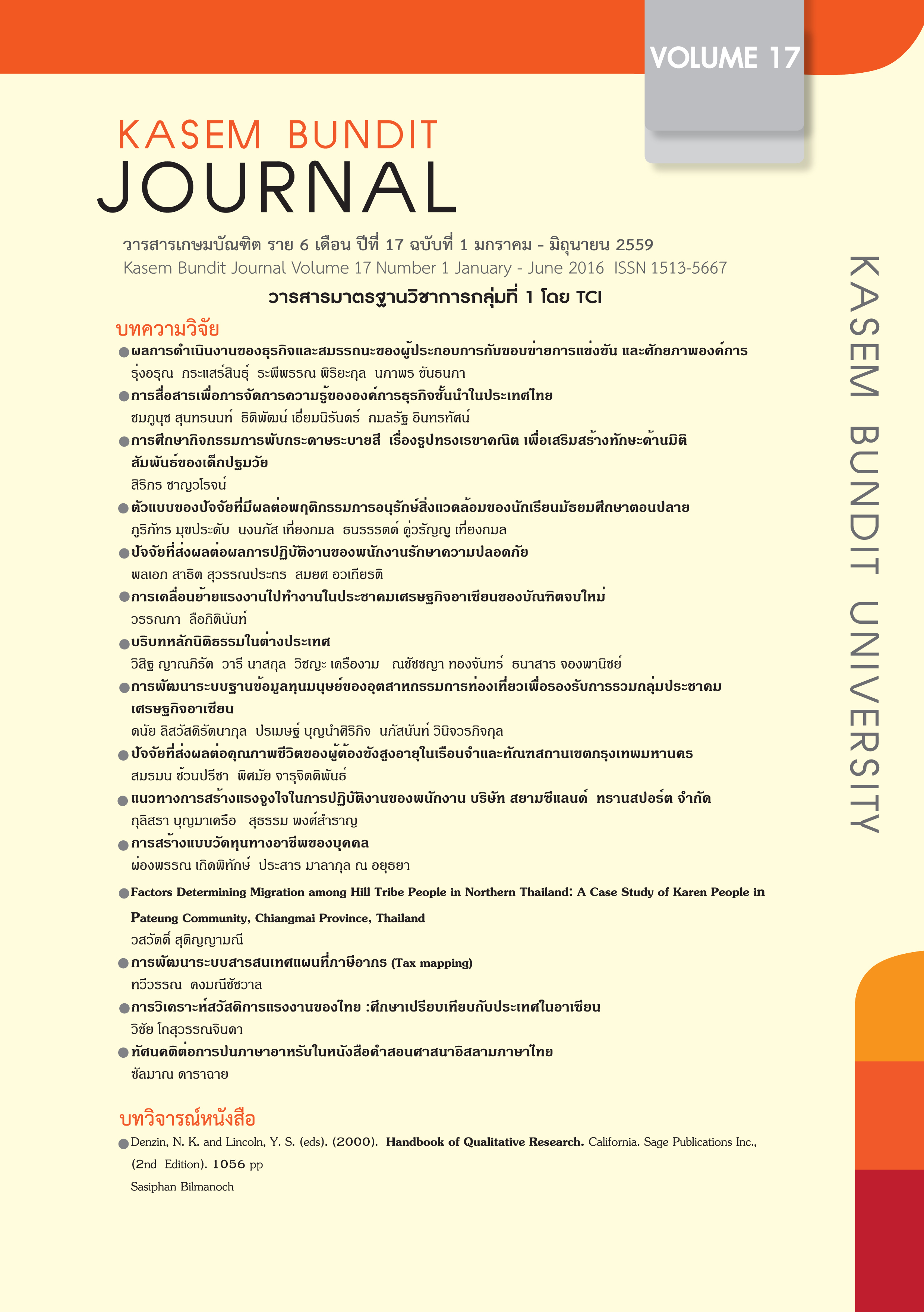Book Review Denzin, N. K. and Lincoln, Y. S. (eds). (2000). Handbook of Qualitative Research. (2nd Edition). California: Sage Publications Inc., 1056 pp
Abstract
When a senior academic drew my attention to this edition, it reminded me of how much more information is available now about collecting and analysing qualitative data. More than a decade ago, when I was undertaking PhD in communication in Australia, there were few books available on this topic of Qualitative Research Analysis. Even the references published (e.g. Denzin and Lincoln 2000) included much basic argument or philosophical analysis that remained at a very general level. Students were left to work through the terms and semantics in order to develop a practical combination of analytical methods, aimed at solving their specific problem. I was fortunate to have advice from three senior teachers with varying perspectives and each contributed important lessons – relating to survey design, encoding, summarizing and presenting data as well as critical analysis and statistical testing. Now that I am in a position of supervising and advising graduate students, I find it much easier to emphasize key points and be able to refer a student to a handbook like this
I think the “total process” approach of this author is very beneficial, because it emphasizes the broader perspective and shows how each phase connects with others. It also demonstrates how decisions taken at the start of a study can influence much later stages. In this respect I think the progressive flowcharts, at the beginning of each chapter, are particularly useful summaries. The boxes within chapters are also valuable as reminders of key points. Space prevents a detailed review of all aspects of this book, so my comments below are confined to a few aspects that I consider most important, from my own experience.
First, I totally agree with Richards “statements of thinking forward to ‘think project goals” and “specifying what you are setting out to do and how you will do it”. My supervisors / advisors reinforced how important it was to have clear initial objectives and hypotheses to test – together with possible alternative hypotheses, if data analyses gave unexpected results. As Richards points out having clear aims also helps to focus the drafting of relevant
questions. It has been my experience that the importance of careful phrasing and sequencing in interview questions, surveys or questionnaires is widely underestimated. I have often seen a series of general, and apparently unrelated questions used: this results in a wide variety of logical and understandable responses, but which do not directly relate to the situation of interest or relevance to the researcher. Difficulties of assessing truth, objectivity or gender bias can only be addressed by use of sequencing and connectivity, reinforcing and cross-validation in the design of surveys or questionnaires.
One of the common statistical recommendations is to maximize sample size – for more meaningful / powerful results. To have large samples is not so essential now, with some of the software packages developed in recent years – such as those discussed by Richards; however, as the author notes, there is no simple dichotomy between numerical and non-numerical data. It seems logical to recommend maximizing sample sizes, where possible, and collecting data in a way that can be entered quickly into a standard statistical package and subjected to a range of standard repeatable tests.
Richards’ primary focus is the gathering, analysis and interpretation of qualitative data – but I feel it is a logical extension to emphasize the importance of comparing and contrasting qualitative conclusions with statistical test results and assessing findings in a broader perspective.
Scientific research was traditionally based on careful detailed observation and is now heavily dependent on mathematical analysis or testing of observations or quantitative data. To assist researchers and students with analysis, there are many standard packages and statistical tests available. The choice of which to use depends on the types of data to be analysed, sample size and relationships to be investigated. Social or Communications research is also based on careful observation but also requires verification, where possible, with statistical testing. The major problem of this type of research has, until recently, been the rigorous analysis of highly variable but small datasets; however the packages now developed, such as those discussed by Richards, alleviate this perceived deficiency.
The importance of this socio-communications research is only now being fully recognized in many countries. But, as elsewhere, the problems with designing valid social or communications studies in Thailand often relate to: unrealistic objectives, small sample size, interpreting highly variable data and choosing appropriate statistical tests to analyse small datasets for meaningful results. I see books such as this (with its associated website) playing a crucial intermediate role in improving methodology of the increasing number of socio-economic and community studies being undertaken in Thailand. Unfortunately, at present, there is no general awareness of the most appropriate methods for qualitative research. This contributes to a situation where there are many individual analytical approaches, data of varying quality and interpretation that is neither consistent nor comprehensive.
Downloads
How to Cite
Issue
Section
License
ทัศนคติ ความคิดเห็นใด ๆ ที่ปรากฏในวารสารเกษมบัณฑิตฉบับนี้เป็นของผู้เขียน โดยเฉพาะ มหาวิทยาลัยเกษมบัณฑิตและบรรณาธิการ ไม่จำเป็นต้องมีความเห็นพ้องด้วย







